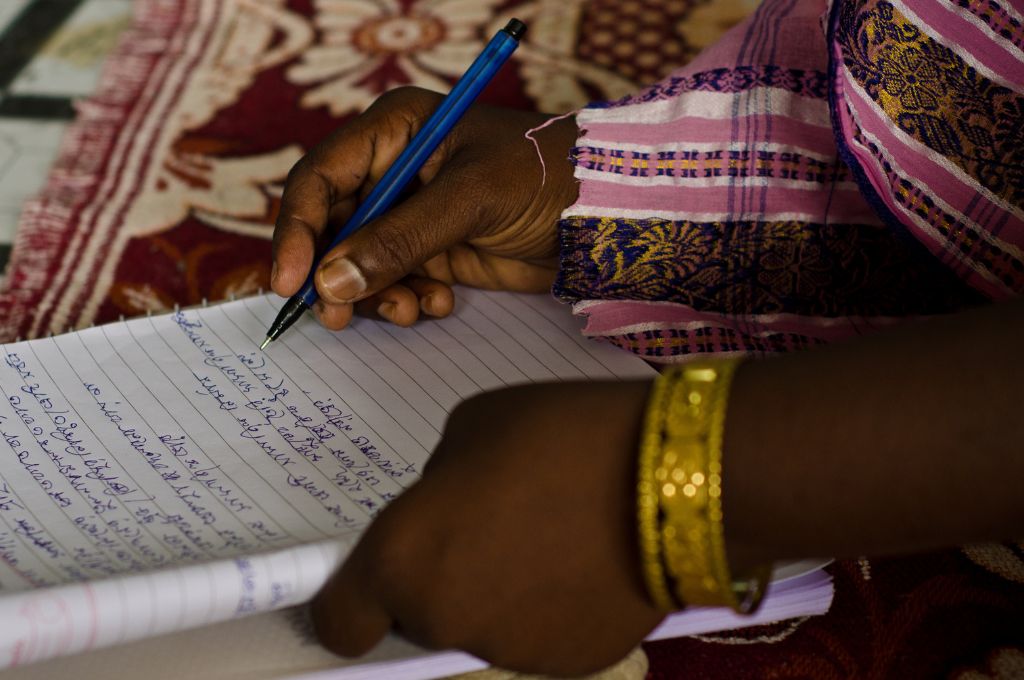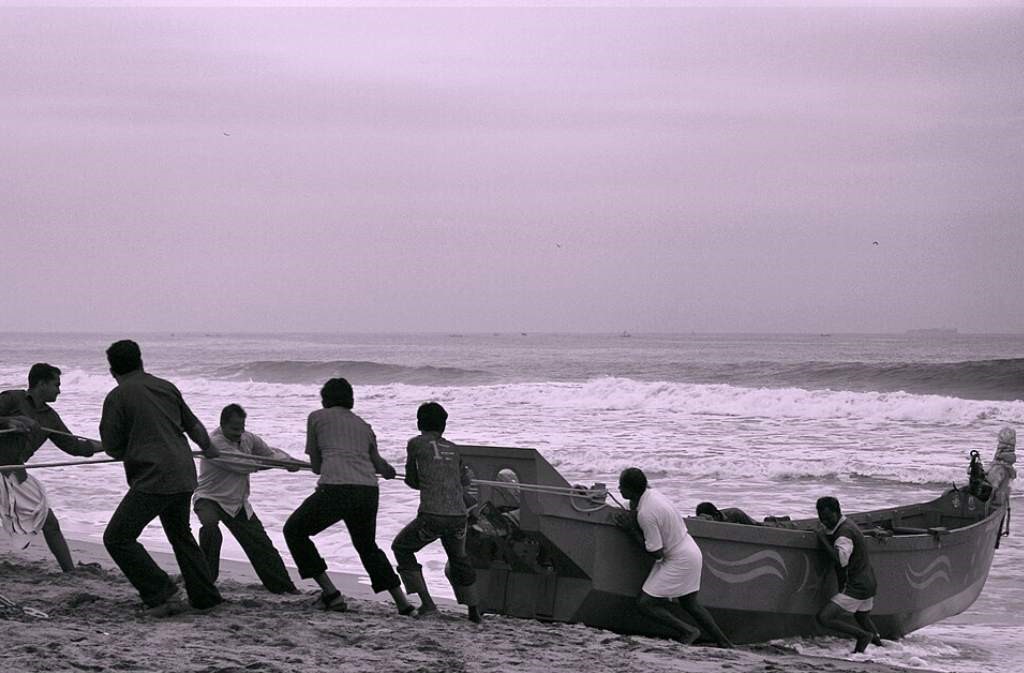Vishal Talreja co-founded Dream a Dream with 11 other people. He is an Ashoka Fellow, an Eisenhower Fellow, a Kamalnayan Bajaj (Aspen) Fellow, a Salzburg Global Fellow, and a board member at Goonj. Vishal was also the founder-director of UnLtd India and board member of PYE Global and India Cares Foundation. He has been recognised as an ‘Architect of the Future’ by the Waldzell Institute in Austria and as ‘Innovator of the Year’ in 2019 by HundrED.
Suchetha Bhat is the CEO of Dream a Dream, a nonprofit that empowers children from vulnerable backgrounds. Since starting her career in 2001, she has worked both in the corporate and social sectors. Under her leadership, Dream a Dream has grown from working with 10,000 young people in Bengaluru to more than one million children across five states. NITI Aayog has listed Suchetha among the 75 Women Entrepreneurs Transforming India in 2021.
In Part I of this conversation with IDR, Vishal and Suchetha share the story of the organisation’s implosion, Vishal’s burnout, and how owning up to failure was the first step in figuring out the way to build back up. This article is an edited transcript of a Failure Files podcast episode that was recorded as part of a special series, where we look at the intersection of failure and well-being, in partnership with The Wellbeing Project.
Rachita: Today I am in conversation with Vishal Talreja and Suchetha Bhat. For close to a decade, Vishal led the nonprofit Dream a Dream, which has been working with young people from disadvantaged backgrounds since 1999 to help them overcome adversity by developing life skills. The organisation has impacted 1.5 million children through state partnerships in Delhi, Jharkhand, Uttarakhand, Telangana, and Karnataka.
Dream a Dream has seen a lot of growth and success. But not without its fair share of failure.
So here’s what happened. One day Vishal woke up to the realisation that Dream a Dream had, in fact, become an organisation that was quite different from what he had envisioned and what he thought he was building. He was burnt out and had lost confidence in himself as a leader. It was only the recovery from this failure, the building back up, that helped him find a new, different kind of leadership model. And that’s where his partnership with Suchetha comes in. She went on to become the CEO of Dream a Dream, and the two of them along with their team have now built an organisation that they feel proud to stand behind.
But enough from me. Let’s hear from Vishal and Suchetha on what went wrong and why, and what the path to recovery looked like.
Vishal, you joined Dream a Dream as a volunteer in 1999. And, a few years later, you took over as CEO. You’ve been an inspiring and a visionary leader. And yet, 10 years later, you faced burnout. There was discontent within the team, which eventually led to Suchetha stepping into your role. So can you walk us through that journey and what led to this point?
Vishal: So Dream a Dream started in 1999 and 11 of us—friends and friends of friends—came together to start the organisation. We all started as volunteers, and we had no intention of moving in full time when we started. But as the organisation grew, and we started creating impact on the ground, we felt there was a need for one of us to move in full time. A couple of our co-founders initially spent time, full time, trying to build the organisation. And then I reached a point in my personal journey where I said, this is what I needed to do. And I came in full time in 2002.
I was about 23 years old then, with no prior experience of having ever built an organisation or a team. So, for me, everything was trial and error. One of the first challenges that we faced was some of the co-founders moving on to the board as trustees, including myself, and I also worked full time with the organisation. The relationship changed between us from being equal co-founders and volunteers in the organisation to now having a board and an executive director. It also changed the dynamics of relationships, which led to a lot of mistrust, to not being clear on where decisions are taken, who takes decisions, how decisions are taken. So some of us were really good friends as we started the organisation. We’re not such good friends any more, because of this changed dynamic within the organisation, which led to a lot of conflict between us. And that was the first point when I realised that maybe I don’t know how to build an organisation. I need to learn the ropes of that.
We couldn’t resolve our conflicts and issues on our own. So we brought in an external facilitator to help us talk through some of these issues, which led to some pretty drastic decisions, one of which was that all of us as co-founders who were trustees stepped down from the board. As trustees, we brought in a professional board. And then I became the executive director, reporting to the board.
What was good through this entire journey was that the work didn’t get impacted; the work with children continued to do well and thrive, and we continued to build our programmes and approaches. And I continued to be very driven with the work we were doing. The challenges were really around organisation building. And then as the organisation started to grow, and we started to hire more people, and scale the impact of our work, the organisation needed systems processes as any growing organisation needs—HR policies to finance processes to anti-fraud policies and a whole host of things.
What we were losing out on was a core set of values, which makes a nonprofit different from any other organisation.
And because I didn’t know how to do a lot of these things, budgets were growing, and so we needed a professional finance team, an accounting team. The next best thing I did was bring in people who had more experience than me, from different industries, from different fields to guide me. So at one level, I would listen to what they had to offer, because they knew better. At another level, intuitively, I didn’t feel right about the kind of organisation we were building. Because what we were losing out on was a core set of values, which makes a nonprofit different from any other organisation. Values of trust, authenticity, dignity, diversity, inclusion, which were values that were all there in my head, but I didn’t have the ability to articulate them and put them down, translate them into systems and processes or policies of the organisation. So that led to a gap between what I wanted Dream a Dream to be, and what Dream a Dream was becoming.

Rachita: Clearly, in terms of what you’ve articulated, there were issues of self-doubt, internal miscommunication. There was also a great deal of passion and energy; there was a demanding work culture. It’s clear that the process of burning out was something that kind of lay beneath the surface all of these years, right? It sounds to me like it was a slow burn over a long time, until it wasn’t. So was there a moment when you realised that you had had enough? And that was your breaking point? And also, looking back now, why do you think you may have missed some of the warning signals?
Vishal: Yeah. That’s an important observation, Rachita; I do believe it was a build-up. One thing I would keep telling myself is that I can’t burn out. And I used to feel very proud telling my friends who worked in the corporate sector, saying, you know, I look forward to Monday mornings. And I really did; I used to work seven days a week. I completely ignored family time, personal time. There would be days when I’d get up at three in the morning and have this brilliant idea. And I needed to talk about it. So I would shoot an e-mail to the team. I was really pushing myself.
Second, because I was so unsure of myself and my decision-making, they were high levels of micromanagement, which meant a lot of things came to my table. So if you’re making an annual report, I am the one saying this is the font we need to use, this is the colour we need to use, I’m not happy with this design. There was a point in time, I think 2006–07/08, when I was doing the bookkeeping for the organisation—literally putting entries in tally—because I didn’t trust anyone else to do a good job and I was a stickler for getting it right and for high levels of transparency. So it was a build-up. I was doing it to myself.
The culture had become toxic; there were high levels of mistrust.
And then, in 2009, I had a breakdown where I burnt out. And the realisation that I had is that I wouldn’t want to work in an organisation like Dream a Dream any more. It had become highly bureaucratic as an organisation. The culture had become toxic; there were high levels of mistrust. And I’ll give you an example of how that mistrust showed up. On a particular day, one of my colleagues lost their phone, and I was not in office; I was outside. So the team just decided that we’re going to check everyone’s bags to see who who might have taken the phone. And our team consisted of people who are highly educated, came from privilege, and young people who are alumni from our programmes—so people from the community itself. And that decision to check everyone’s bags was highly undignified. It broke the culture of the organisation in that moment.
The moment for me, when I kind of realised that I had had enough. I remember getting up on a Monday morning, getting ready for work, and having this thought just emerge—that I don’t feel like going to work, which had never happened in nine years of being at Dream a Dream. And that thought scared me. So that was a moment I knew that something had completely broken apart, and I needed to do something about.
Rachita: So what did you do?
Vishal: So I just called up the office and said I’m going to go away–didn’t tell them where. I said I’m not available. I called home and I said, I’m going away for a conference for a few days. Landed up at the Bangalore bus stop early morning and just literally took the first bus getting out of this bus stop not knowing where it’s going. Eight hours, nine hours later, landed up in Coorg. Since I’m here, might as well stay here for a few days, checked into a homestay. And for a week, I just slept. Didn’t switch on my phone, didn’t switch on my laptop, just slept. And I realised my body needed that rest; my body was exhausted. And all I needed was a space where I could sleep. And then, a week later, I came back and I knew that I had to change something, something fundamentally within myself, but also in the way the organisation is run.
Rachita: Suchetha, I’d love to bring you in here, because this was around the time that you joined Dream a Dream, right? What was it like coming into a set-up that was in crisis? How did it feel initially?
Suchetha: So it was a mixed bag for me because at that time I was working in the corporate sector making this big transition in life and career to move into the social sector. And I did that because I had been a volunteer at Dream a Dream and I had been so inspired by the work. And the volunteering journey is what made me realise that, you know, I don’t want to be an engineer, I don’t want to be in sales. I want to work with people, I want to work on life skills. I saw myself as a psychologist, so it was a journey of discovering myself. I came in with so much hope and, you know, this idea of everything that I will do. So that way it was a bit disappointing.
Like Vishal said, decision-making was a bit of a mess, a big mess. For some decisions, you just had to go to Vishal and ask, “What is the snack we will have at this event?” At other times he would say, “Why are you asking me? It’s your role; you take the decision.” So it was very inconsistent. And we kind of, you know, didn’t know how to navigate that as a team.
All the operational things that actually make you function in your role and make you feel satisfied, those were not there. So it led to a lot of frustration.
But, at the cultural level, I realised that a lot of people, to some extent, even me, we had joined Dream a Dream because we were enamoured by Vishal—by his vision, you know, listening to this TED Talks, having met him, having heard what he wants to create in the world. So you join in thinking you’re joining, you know, this, being part of this big change. But then you realise that you don’t really know what to do on a day-to-day basis. What is your role? What is the expectation? How do you measure yourself? How do you even know you’re making progress? So all the operational things that actually make you function in your role and make you feel satisfied, those were not there. So it led to a lot of frustration. And in the way it was set up, this frustration was then always projected on Vishal. So everybody in the team, including the board, it was always Vishal’s problem, right, something that Vishal was not doing right, something that he needed to change.
And for a lot of time, I also bought that narrative—that it’s his leadership style, he is not investing in his well-being, he’s not investing in putting in processes, he’s not prioritising right. So I also bought into the narrative that it is Vishal, till I spent time with him and I realised that some things are his problem, but it’s not necessarily just him. There is a much bigger challenge here. And, for me, that challenge was that Vishal is really a visionary kind of leader. He’s a very different visionary leader, who’s always seeing the future, and almost always dissatisfied with everything that’s happening, because he has this big idea of where we should be. And if you take that on as a norm, then you will be left, you know, forever feeling guilty and inadequate. So that’s when I realised that it’s not just that he has to change, because you want that—the quality is of his ability to see the future, the qualities of his passion and his commitment to this is what you want in a social entrepreneur. And what we also need in Dream a Dream. But we also needed a bridge, something that builds the capacity of the team to understand where they are at, and what are the steps that we need to take to really make this vision possible and move in that direction.
Rachita: The next few years were not easy at Dream a Dream. Half the team had left the organisation by this point. As they began to rebuild from the ground up, Suchetha would soon discover that her role needed to be much larger than what she had been recruited for.
Read Part II to know what happened next, how the process of recovery unfolded, and what changes were needed in order to rebuild the organisation.





